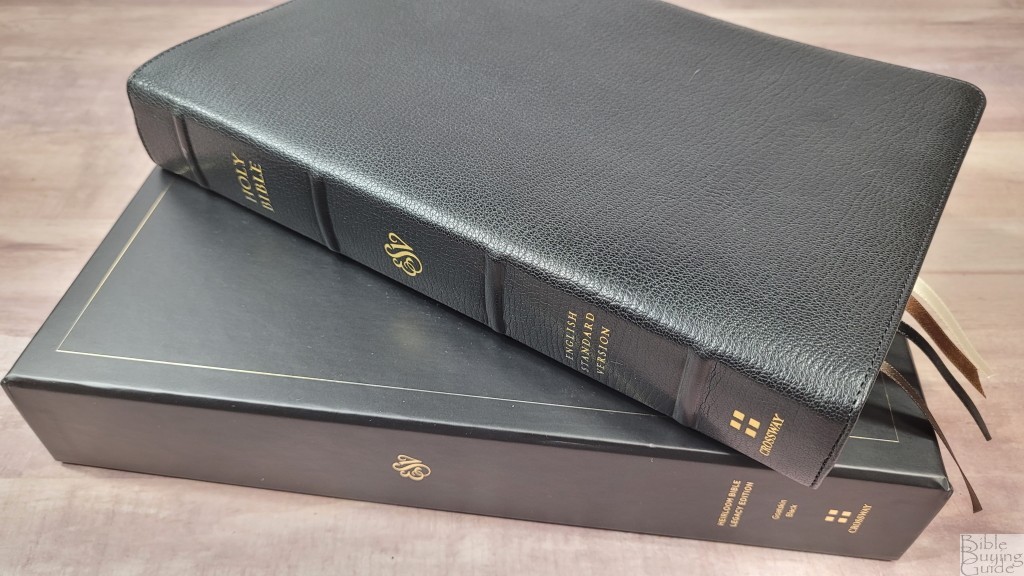
Crossway’s Legacy is the Bible that I consider to be the definitive ESV. Its design comes from renaissance book design directives to create the perfect layout. I consider the Heirloom edition to be the definitive version of the Legacy. The Heirloom Legacy was first produced in the Netherlands and it was an amazing Bible. Crossway then moved the production of the Heirloom series to China. This was a good Bible, but it didn’t look or feel like an Heirloom to me. To my joy, the Heirloom Legacy has moved back to the Netherlands where it belongs. In this review, I’ll look at the latest version of the Heirloom Legacy and see how it compares to the last two editions. This is ISBN: 9781433577628, made in the Netherlands by Royal Jongbloed.
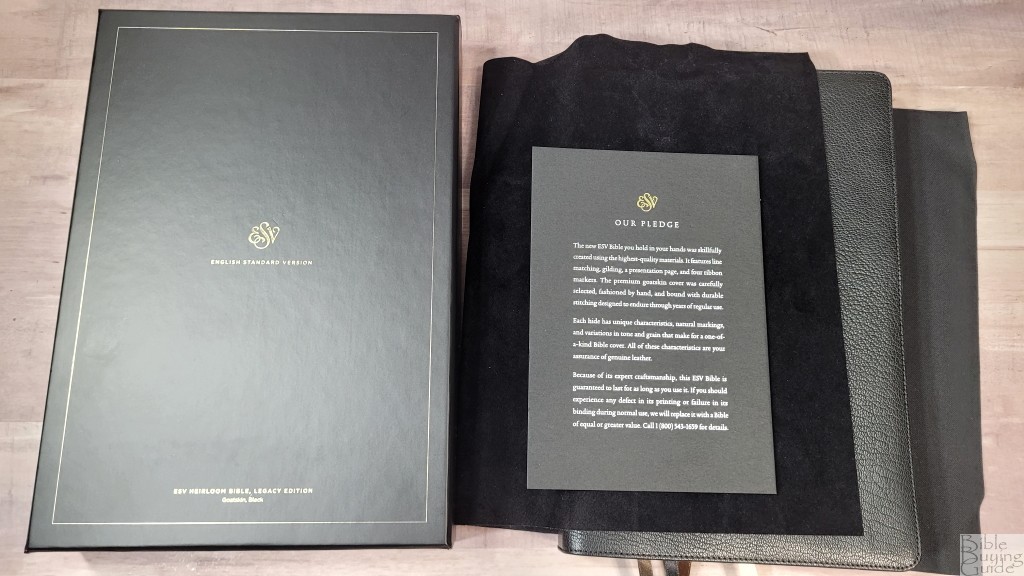
Crossway provided this Bible in exchange for an honest review. I was not required to give a positive review. My opinions are my own.
_________________________________________________________
This book is available at (includes some affiliate links)
Christianbook
_________________________________________________________
Table of Contents
Video Review
Cover and Binding

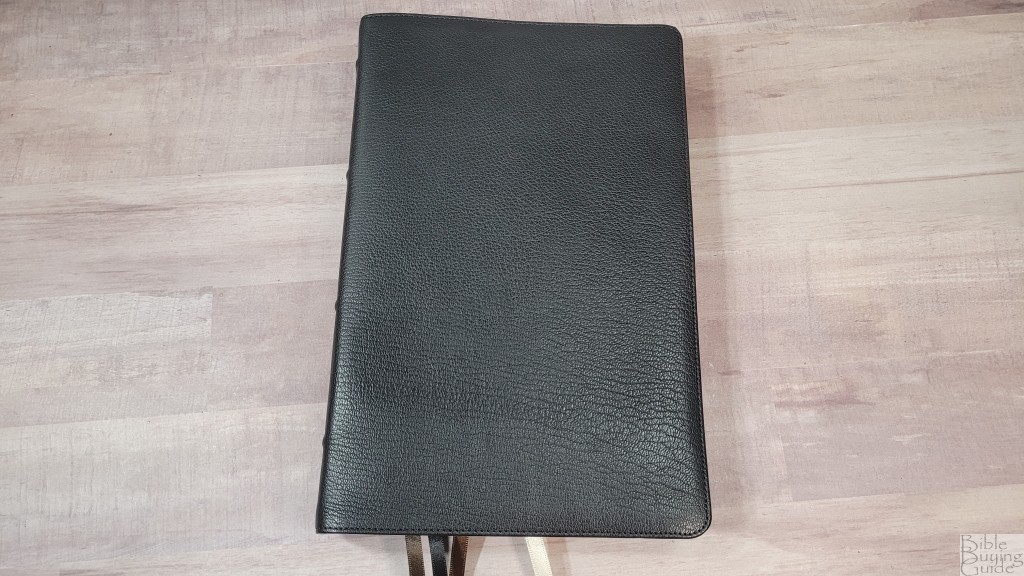
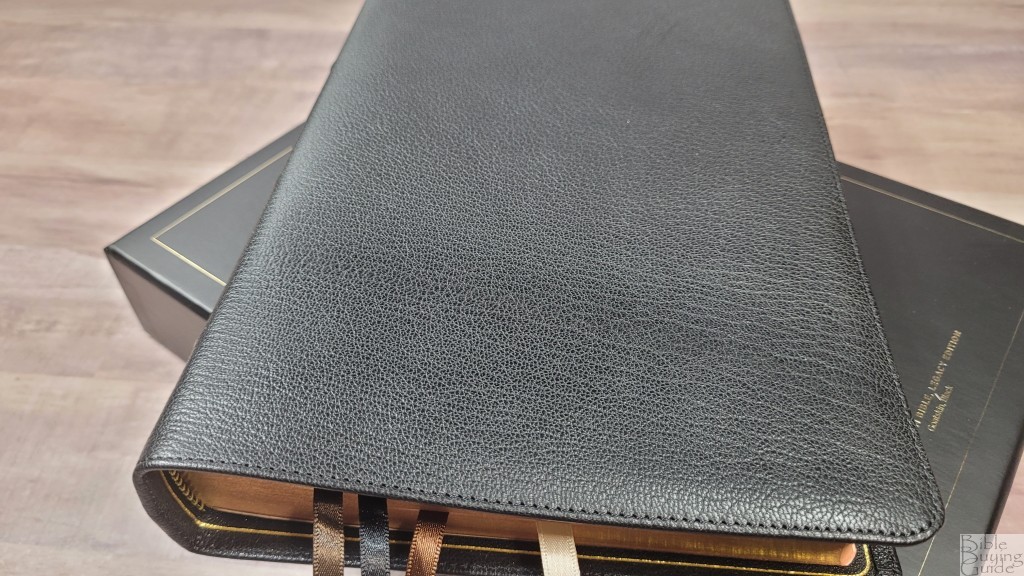
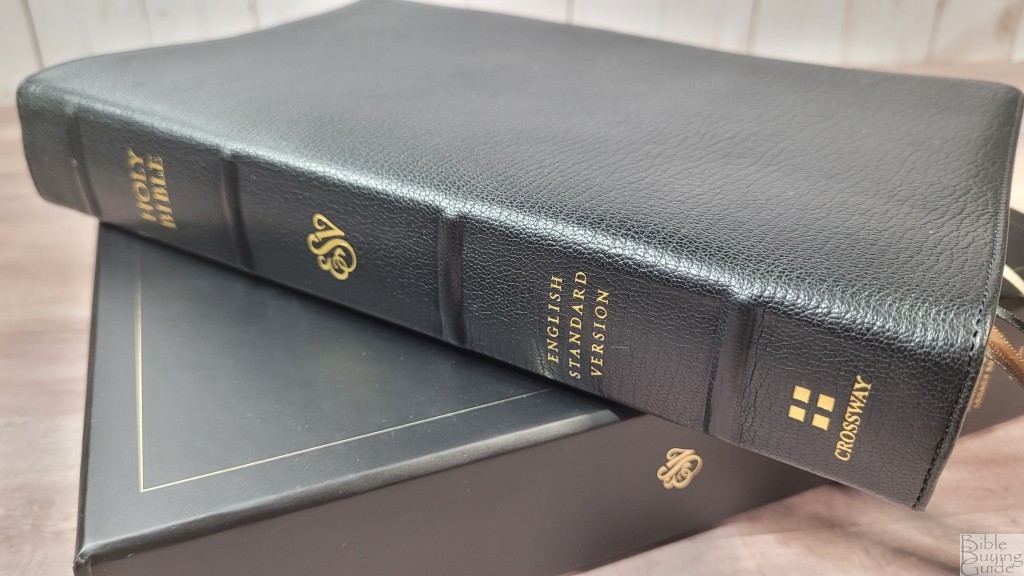
The cover is black goatskin leather with a semi-bright finish. It has a smooth grain and it’s soft to the touch. This leather is similar to the leather used in the ESV Preaching Bible, but this leather is slightly thicker. It has a 3/8″ yapp (overhang) and includes perimeter stitching. Nothing is printed on the front. The spine has four large raised hubs and Holy Bible, the ESV logo. English Standard Version, and the Crossway logo printed in gold. The cover is highly flexible, so you can roll it any way you want. At the same time, it’s not too floppy to hold open in one hand to read.
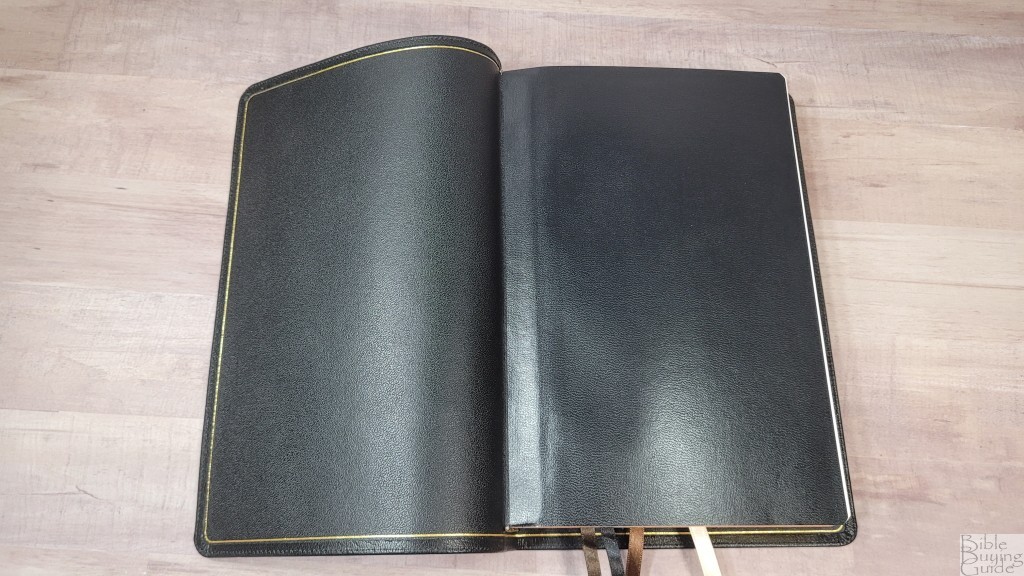
The liner is edge-lined split cowhide leather. It has a gilt line around the perimeter. The tab isn’t too stiff, which allows the pages to open almost flat. It’s Smyth sewn and has no trouble staying open in Genesis 1. It also includes a thick end-sheet in the front and several in the back, which helps add structure. Like the other Heirloom Legacy’s, this one does not include overcast stitching.

It comes with 4 ribbons: black, dark brown, brown, and beige. I like that they’re in different colors. The colors work well together and with the black leather. The ribbons are a touch over 1/4″. They’re long enough to pull to the corner to open the Bible. The overall size is 9 3/4″ x 6 3/8 x 1 1/4″ (although it is a touch thicker than that at the spine itself). It weighs 2 lbs, 5.2 oz. This size feels balanced, making it a good choice to hold, carry, and read from.
Paper

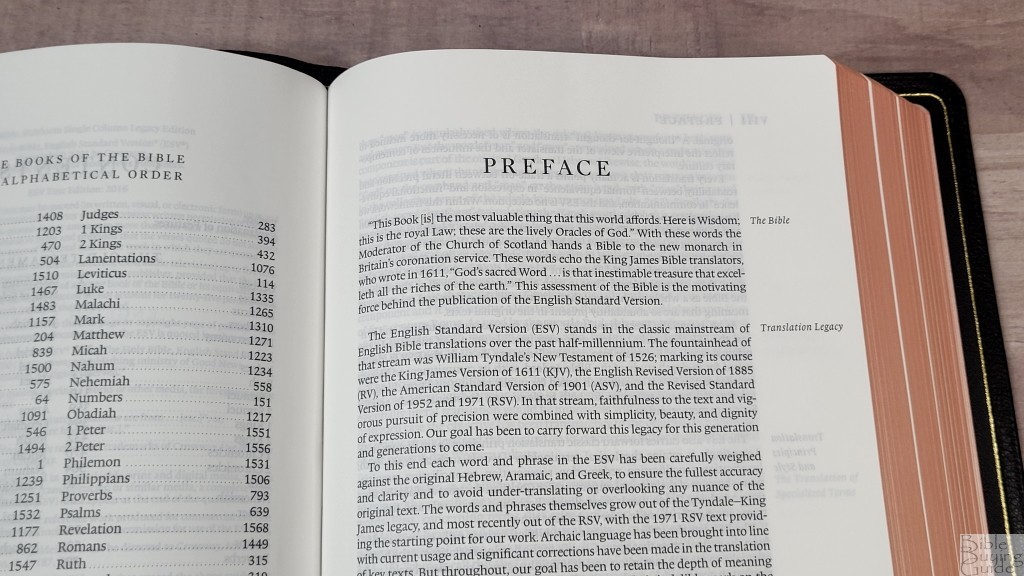
The paper is 28 gsm Indopaque from France. This is the highest quality and most expensive thin Bible paper available. It’s coated and uses a special titanium pigment to increase opacity. This paper is only available in Bibles produced by Royal Jongbloed, such as those from Schuyler, premium editions from Cambridge, etc. It has a very slight cream color and it’s highly opaque. Even though it’s thin, the texture makes it easy to turn. The page edges are art-gilt with a salmon shade of red.
Typography
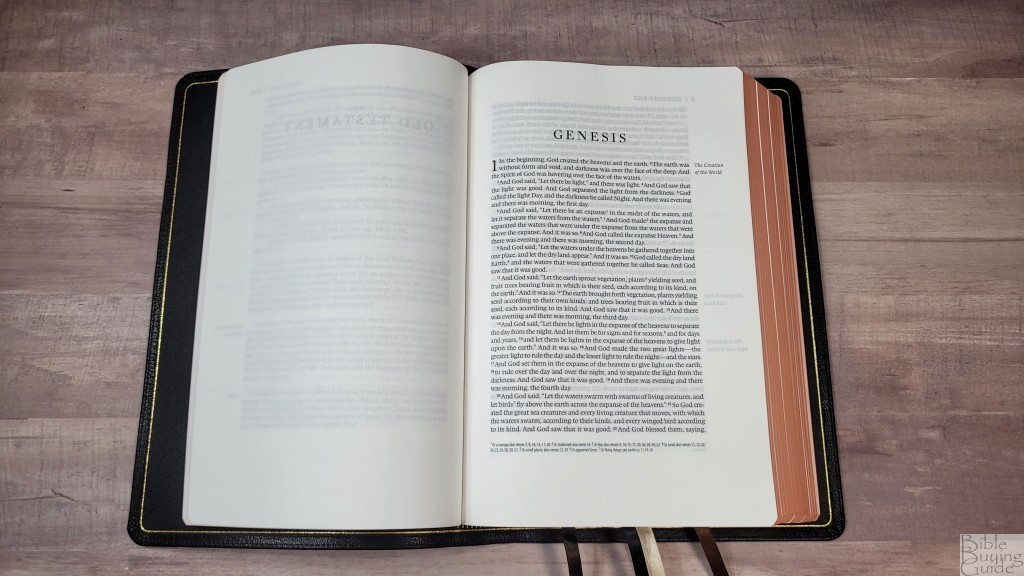

The 2016 ESV text is presented in a single column with poetry set to stanzas. Unlike most modern translations, including the ESV, section headings are placed in the outer margin. This keeps the text clean and is one of the strengths of the Legacy. The header shows the page number in the outer margin with a verticle line separating it from the book name, chapter number, and verse number. Translation footnotes are placed in the footer.
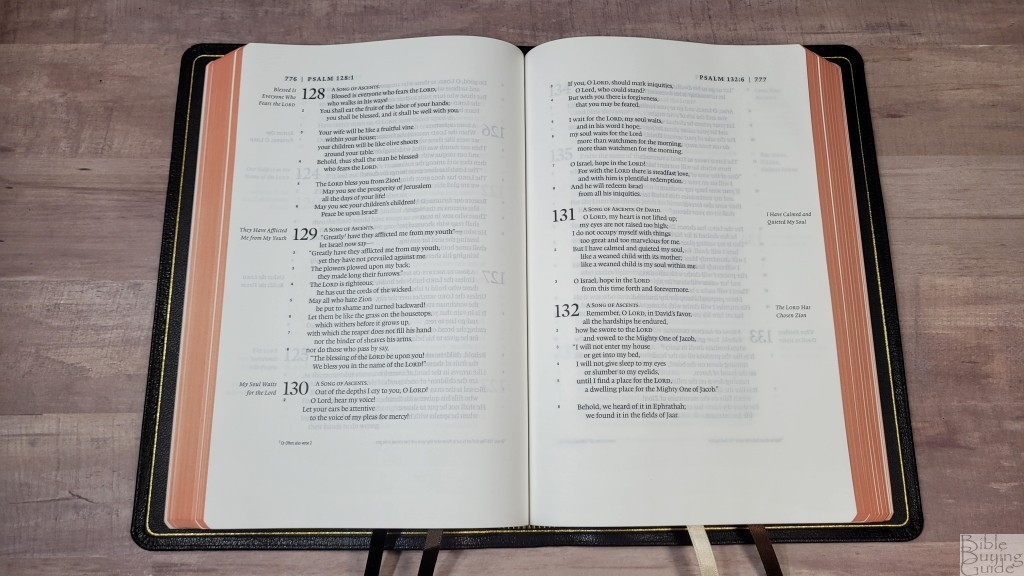
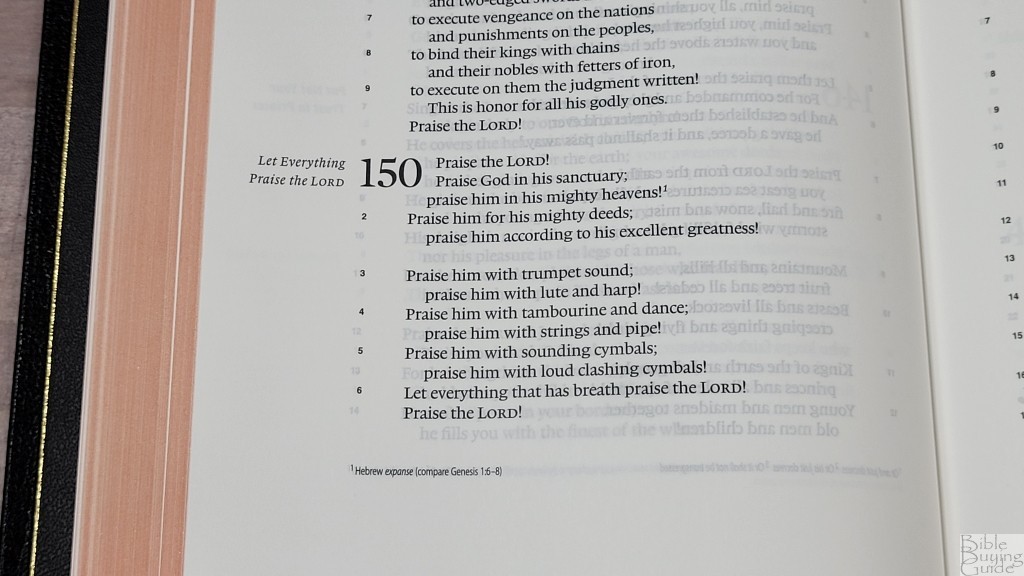

The layout design is based on the Renaissance perfect page that provides a 2:3 ratio page geometry. The Lexicon typeface is 9-point with a 10.75 leading. Like all Legacy’s, this is a black-letter edition. It’s dark and consistent throughout. It has around 14 words per line. Verse numbers are small enough to ignore when reading, but I find them large enough to see when you’re searching for them. This font size and spacing are excellent for reading. The prose and poetic settings are easy to read. For prose, I do prefer slightly fewer words per line, but the poetic setting looks the best with this word count.
Section Headings
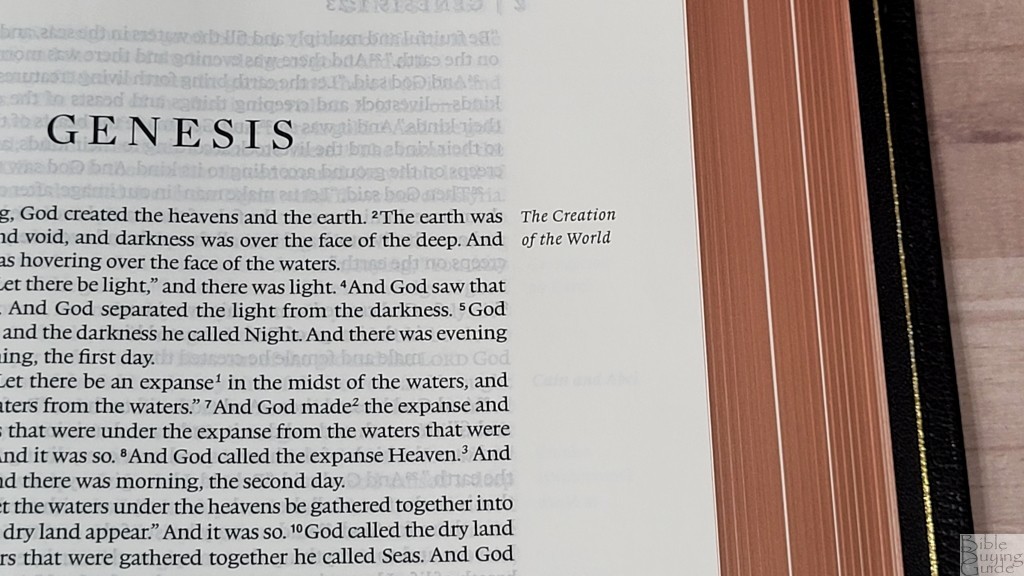
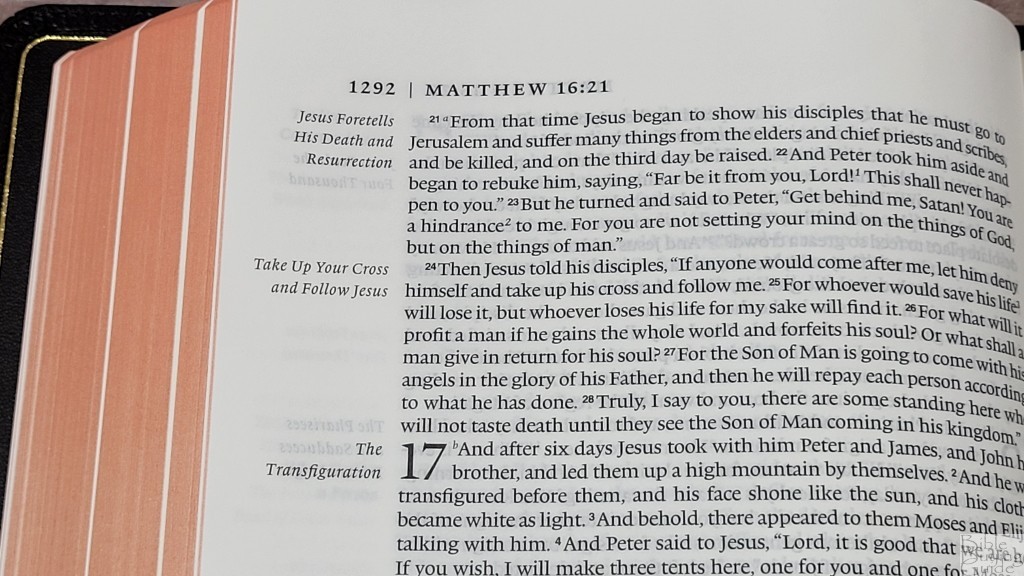
The outer margin has 1.25″, the inner has .625″, the top has 1″, and the bottom has .875″. This space for the inner margin brings the text out of the gutter and keeps the lines straight across the page. The outer margin contains the section headings in italics so it looks different from the text. I like this design a lot. The headings are there if you want them, but you can ignore them if you want to read without distractions.
Line Matching

It’s printed with line-matching, meaning that the lines are printed in the same location on both sides of the page. This reduces show-through and makes the text more readable. The paper is opaque enough that this doesn’t make the text look gray. Show-through is mostly visible in the poetic sections. This layout is excellent for reading. Preaching and teaching can be a little difficult because of the long lines and the small verse numbers. It’s not as difficult once you get used to it.
Footnotes
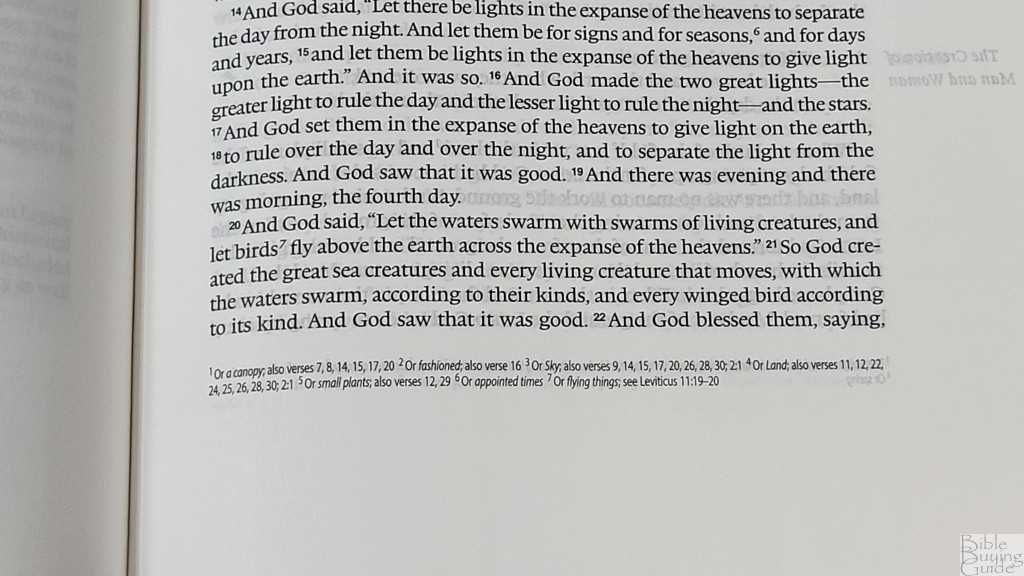
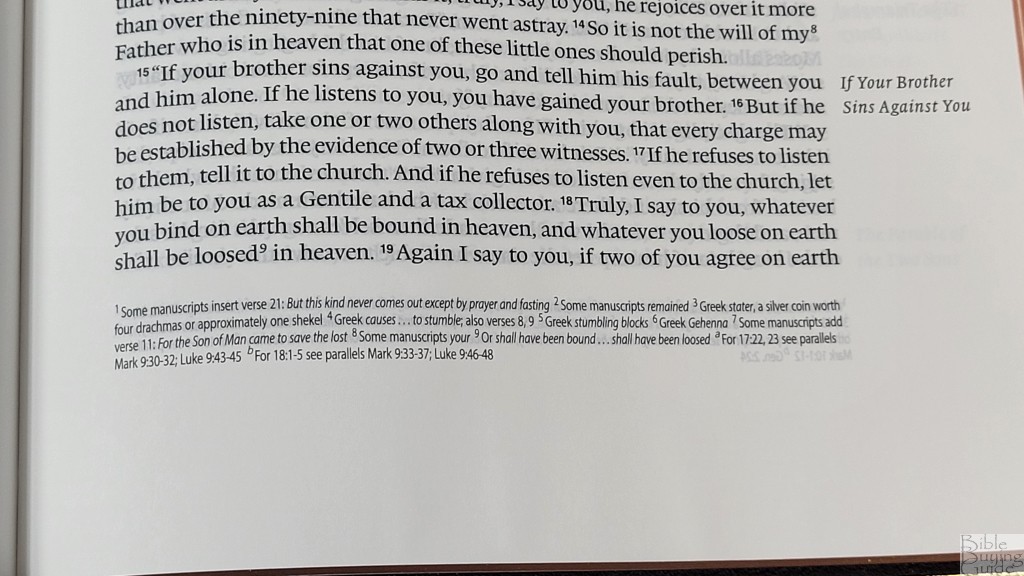
Translation notes are placed in the footer in a smaller font than the text. I’m guessing it’s around 4-point. For me, it’s a touch too small. They don’t show the verse numbers they correspond to. They include information on the Hebrew, Greek, Septuagint, weights and measures, parallel passages, OT references in the NT, translation variants, etc.
Other Pages
There are other pages in the front and back…
Presentation
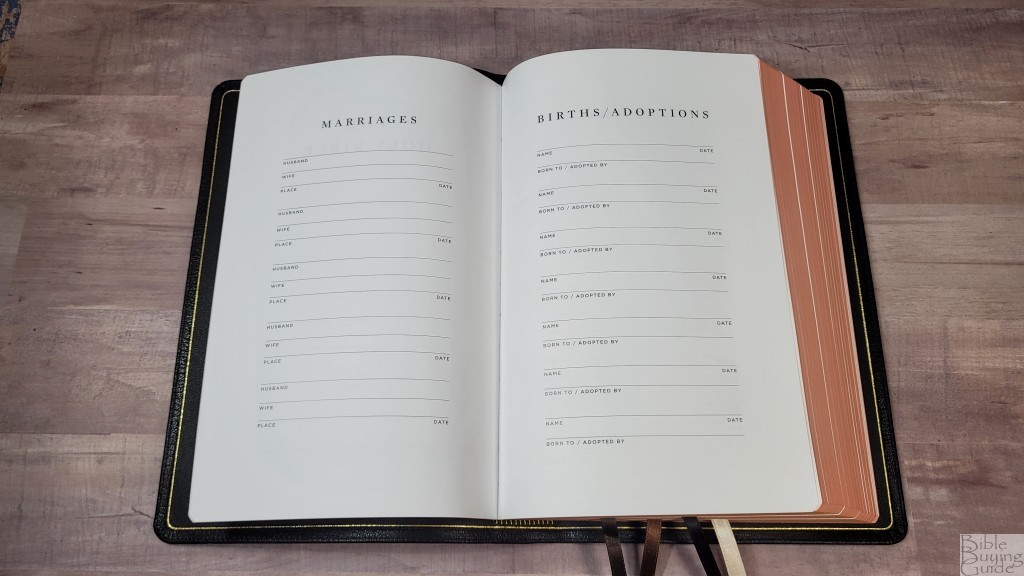
In the front are four presentation pages printed on thick, glossy paper. They include Marriages, Births/Adoptions, and Deaths. These pages work as thick end sheets that help give the Bible support.
Table of Weights and Measures
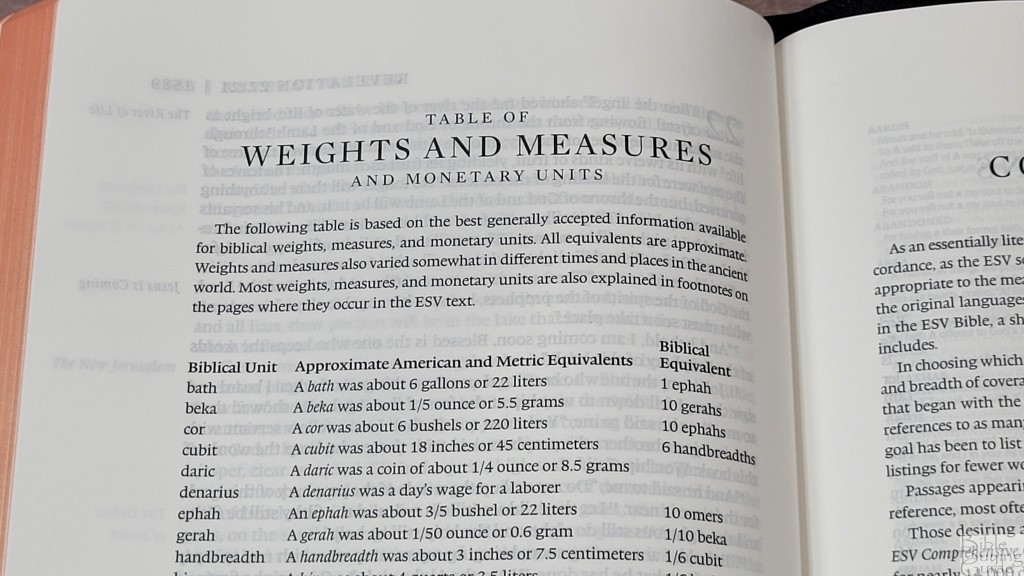
In the back is a one-page table with weights and measures. It shows the biblical unit, approximate American and metric equivalents, and biblical equivalent. These measures are also placed in the footnotes, but it’s still helpful to have them in one place such as a table that’s easy to read.
Concordance
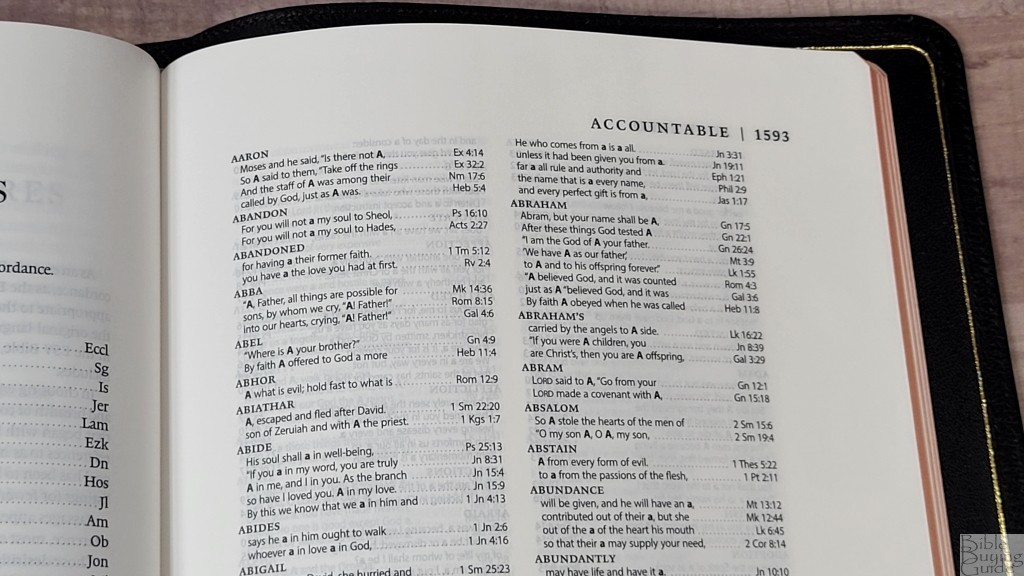
The concordance is 72 pages and has 2 columns per page. There are a lot of references and they include proper names. The concordance also has wide margins, which is helpful if you want to add more references, word studies, etc. This is a good concordance for sermon prep and study. Here are some sample entries and the number of references given:
- Christ – 16
- Christ’s – 4
- Christian – 2
- Faith – 28
- Faithful – 10
- Faithfulness – 6
- Faithless – 1
- God – 49
- Godliness – 4
- Godly – 3
- Gods – 2
- Praise – 19
- Praised – 2
- Praises – 2
- Pray – 11
- Prayer – 10
- Prayers – 6
- Praying – 3
Maps
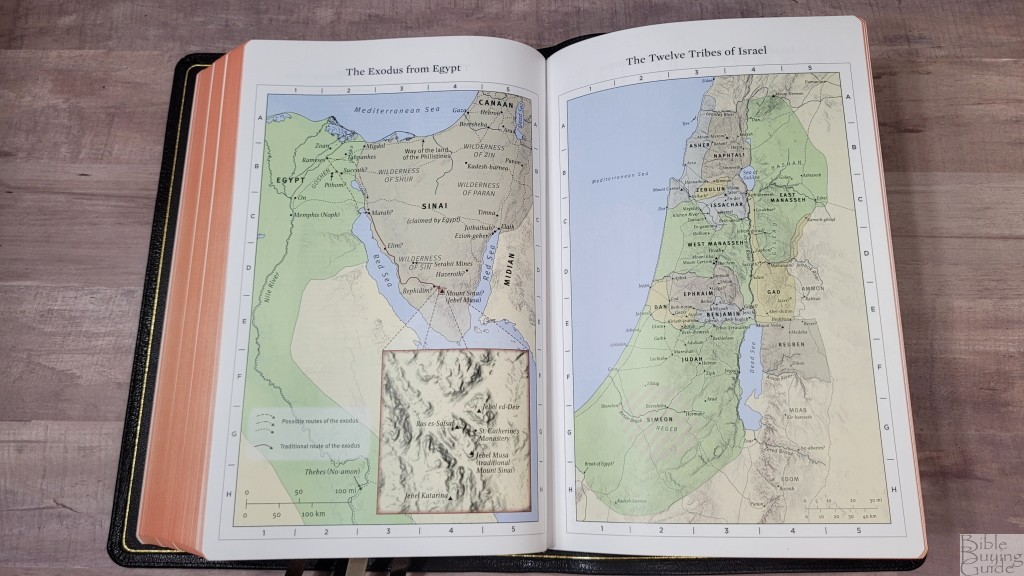
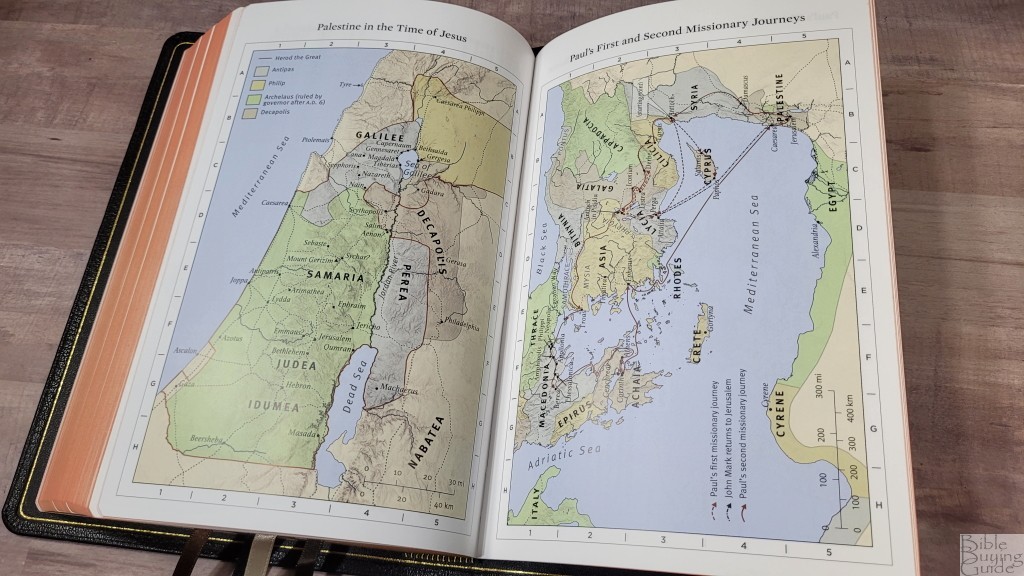
Crossway’s standard 8 pages of maps are printed on thick glossy paper. They’re printed in earth tones with lots of light green and tan. It doesn’t have an index, but the maps are annotated and I find them easy to use. They include routes, distance, borders, rivers, kingdoms, references, dates, and simplified topography.
Maps include:
- The World of the Patriarchs
- The Exodus from Egypt
- The Twelve Tribes of Israel
- Israel Under Saul, David, and Solomon
- Jerusalem in the Time of Jesus
- Palestine in the Time of Jesus
- Paul’s First and Second Missionary Journeys
- Paul’s Third Missionary Journey and His Voyage to Rome
Comparisons
Here’s a look at how the new Heirloom Legacy compares to the previous Heirloom Legacy’s from China and the Netherlands. I’ve also included the ESV Preaching Bible just because.
The Previous Heirloom Legacy from China
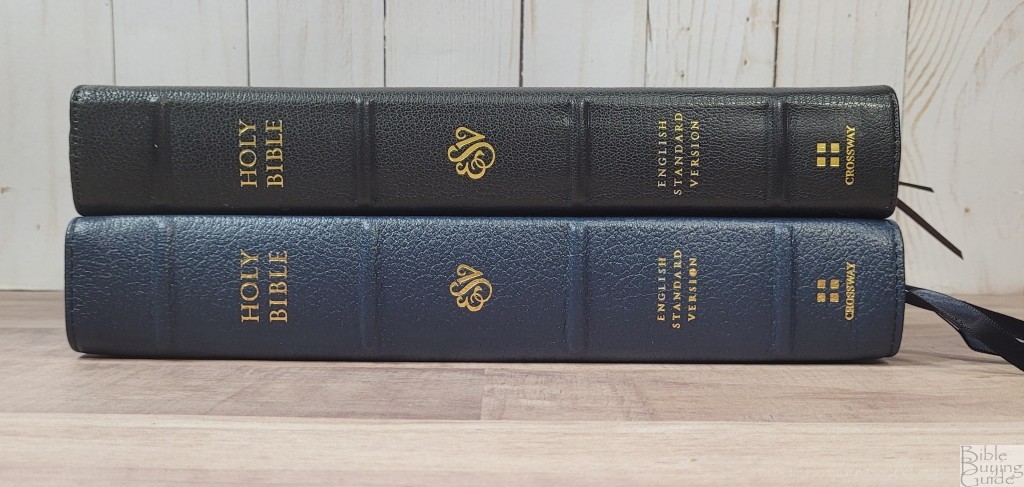
New version on the top
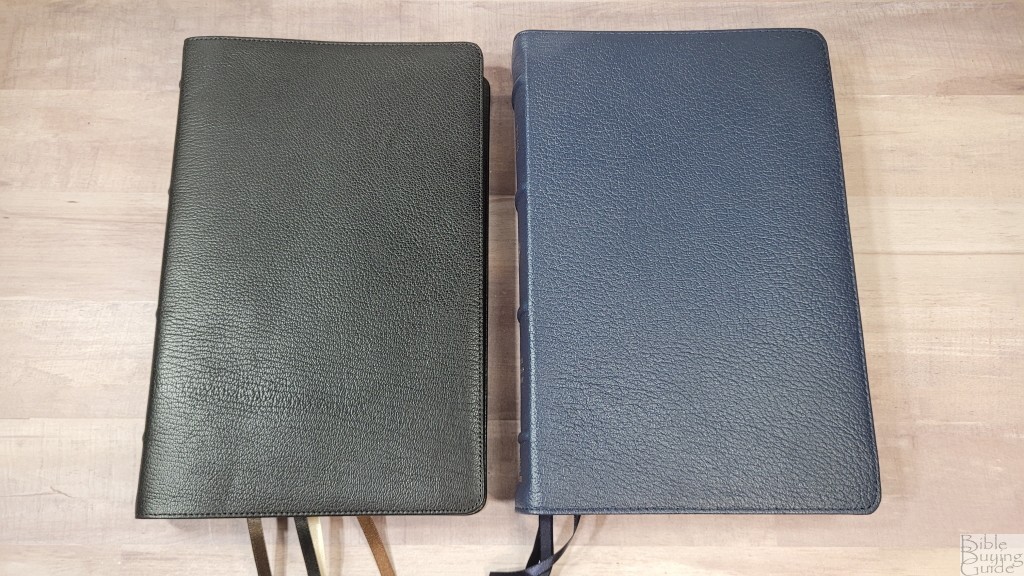
New version on the left
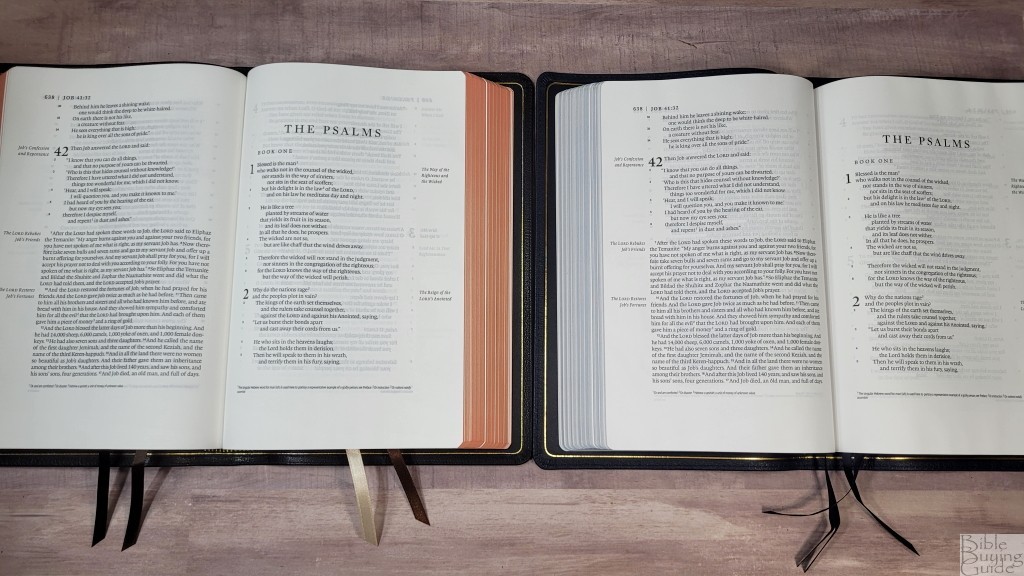
New version on the left
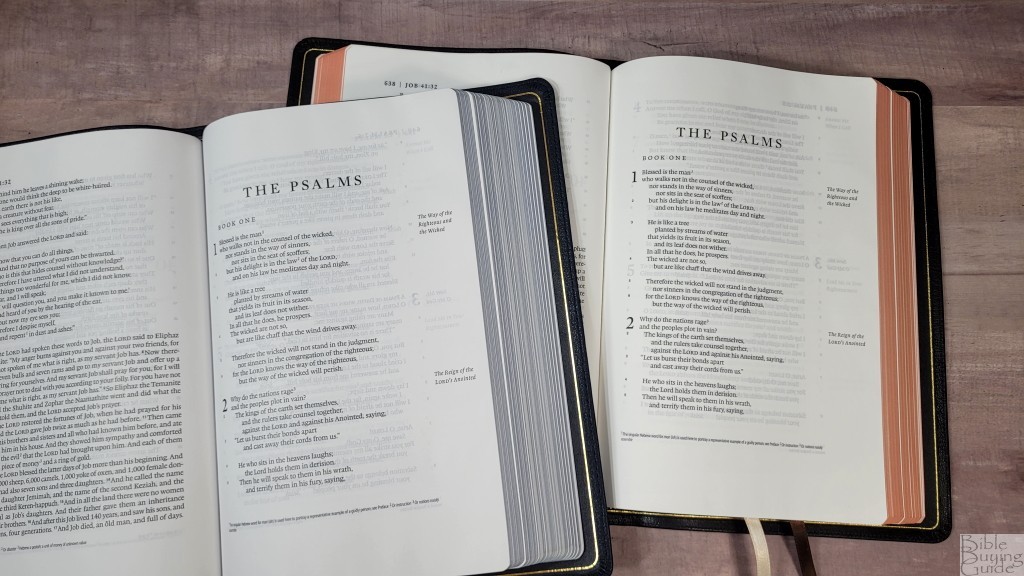
New version on the right
The previous edition was made in China. It had a less elegant paper that was in the mid-30s in gsm. It was highly opaque and did seem to be a good paper. The cover on mine was blue goatskin leather with a slightly deeper grain than the new model. It had four navy ribbons and blue art-gilt edges. This was a good Bible, but it didn’t feel like an Heirloom to me. I even went on record saying that I would change the name.
The Previous Heirloom Legacy from Royal Jongbloed
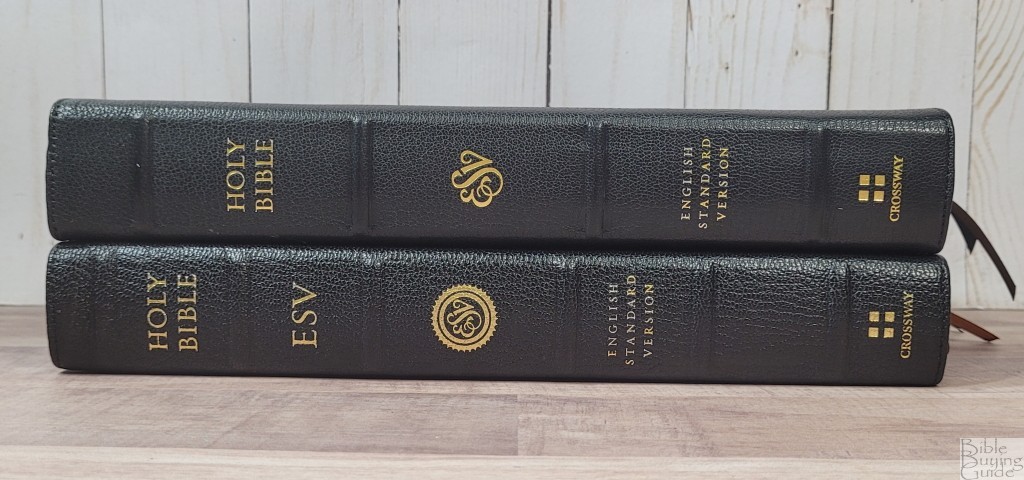
New version on the top
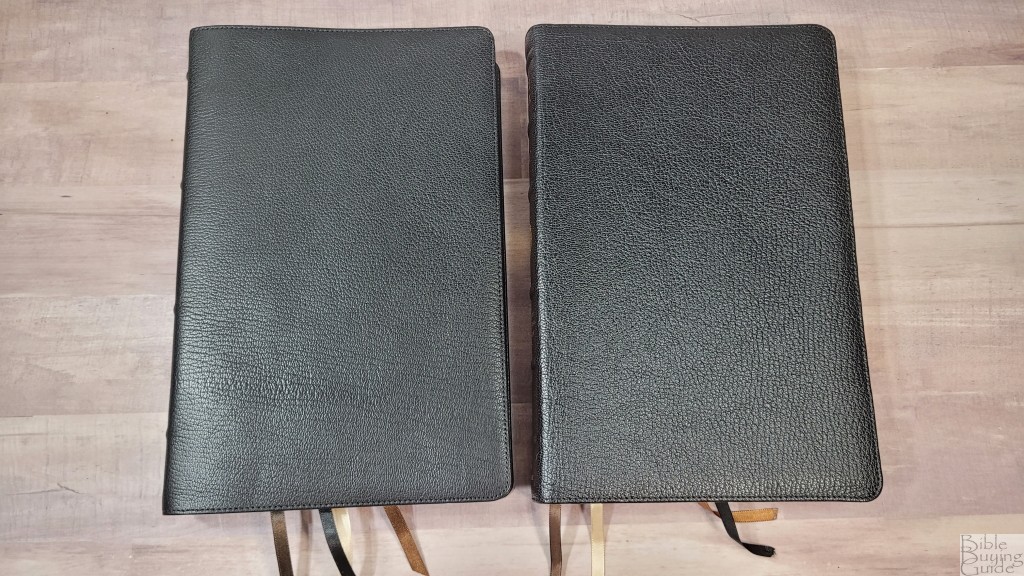
New version on the left
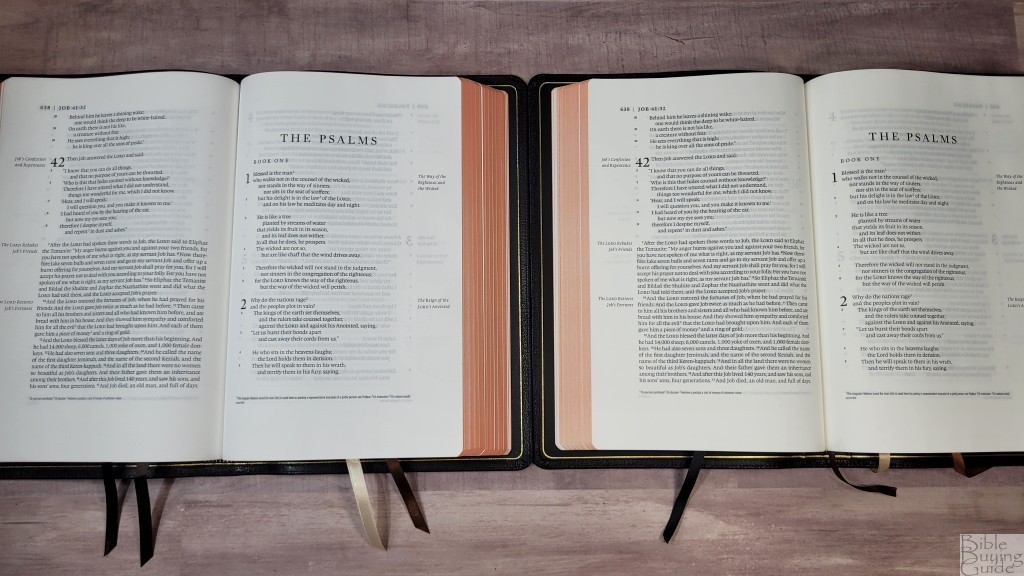
New version on the left

New version on the right
The previous Royal Jongbloed version of the Heirloom Legacy had the same high-quality paper, four slightly thinner ribbons with different colors, and goatskin with a slightly deeper grain. The paper in the new edition might be a hair brighter and more opaque, but it’s very minor. It could be a difference from one lot to another. The grain on the goatskin, very minor difference in paper brightness, and width of the ribbons are the only differences. All are so minor that there isn’t enough difference for me to care.
ESV Preaching Bible Verse-by-Verse Edition
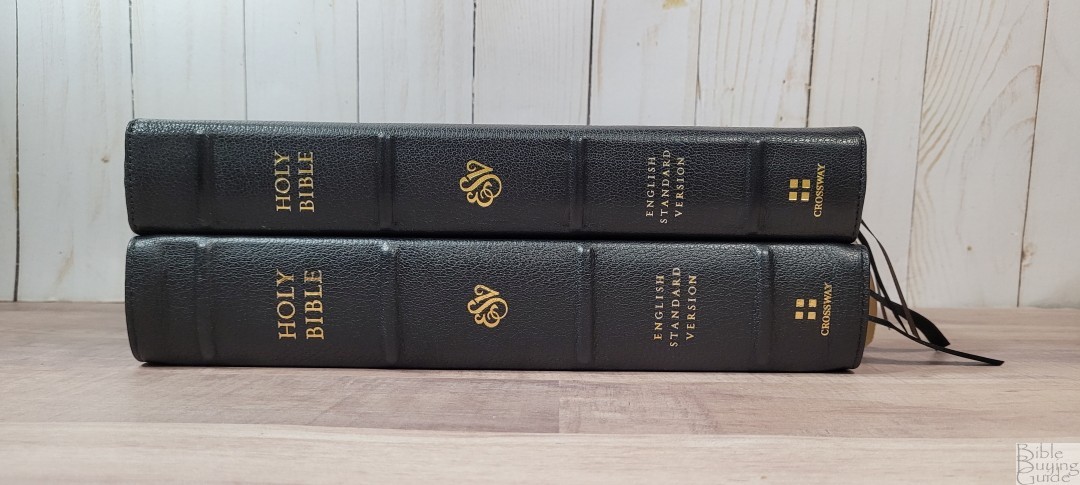

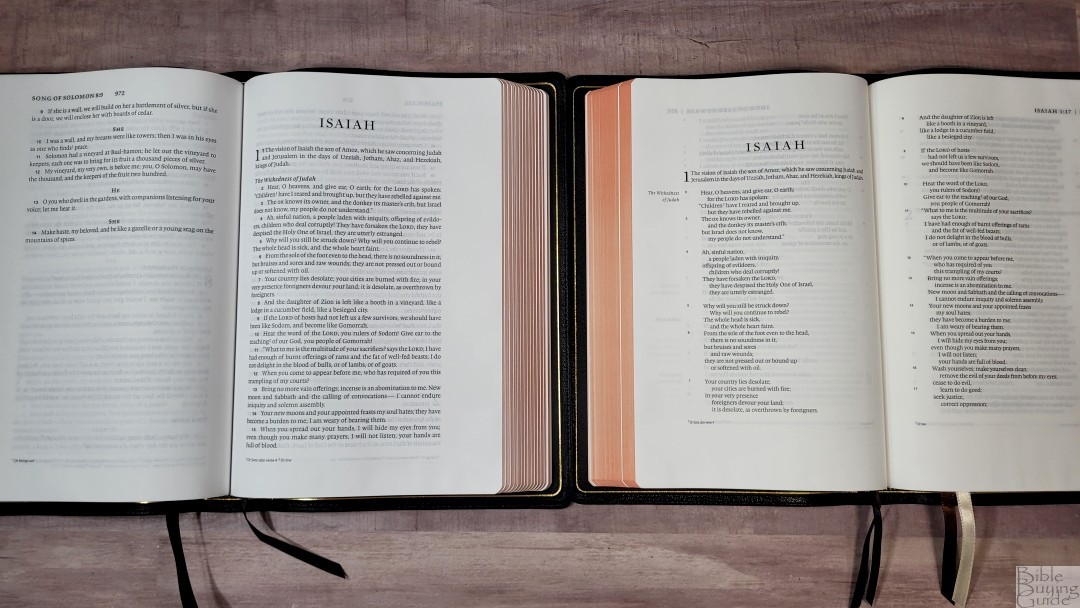
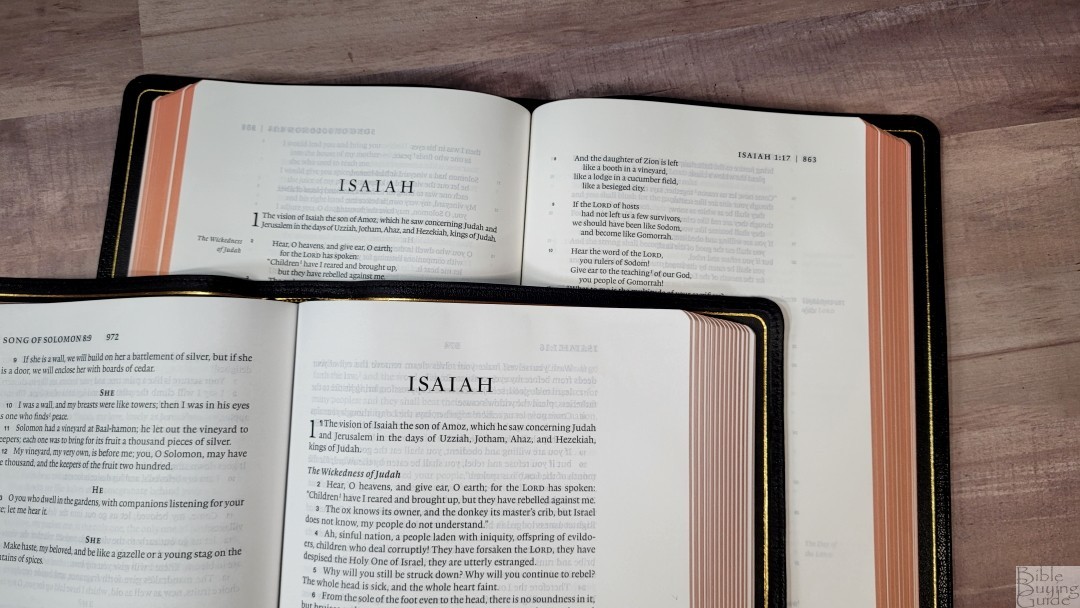
The ESV Preaching Bible Verse-by-Verse Edition has similar leather. It’s a thicker Bible with thicker paper. The font size is a point larger. It has a verse-by-verse layout but doesn’t include a poetic setting. The paragraph version of the Preaching Bible does include the poetic setting. The leather looks and feels similar, but it’s not as thick. It’s a good Bible, but it’s not as elegant as the Legacy made in the Netherlands. Its paper might be better for notes.
Conclusion

The Heirloom Legacy has been one of my favorite Bibles since I reviewed the first edition. The layout is gorgeous and draws me to read it. This is the Bible I think of when I think about the ESV. It can be a reader, a note-taker, or teaching and preaching Bible. The previous edition was a good Bible, but it didn’t feel like an Heirloom to me. It’s great to see this Bible being produced in the Netherlands by Royal Jongbloed again. The Heirloom Legacy is back.
_________________________________________________________
This book is available at (includes some affiliate links)
Christianbook
_________________________________________________________
Crossway provided this Bible in exchange for an honest review. I was not required to give a positive review, only an honest one. All opinions are my own.



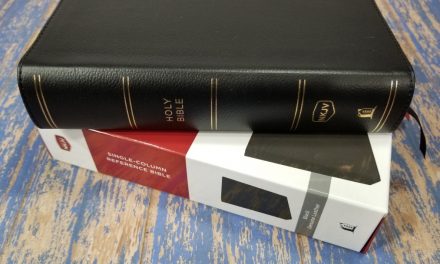

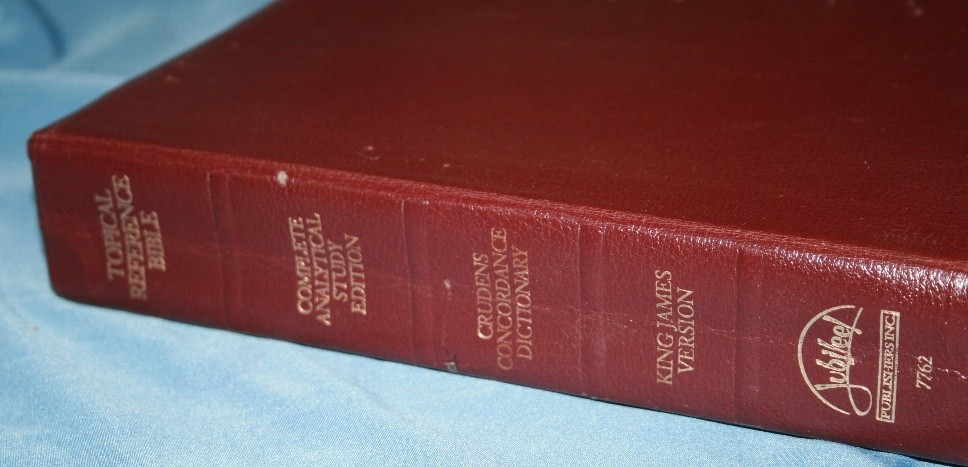





Thanks for such a great review! Would you get the ESV in the Heirloom Legacy or the Heirloom Heritage? I’m torn between both. Both such great Bibles but hard for me to afford both right now. Just wondering what your personal choice would be if you had to pick only one of these two?
Thanks Charles! The Legacy seems to be the most popular. I prefer the Heritage because of the smaller footprint, two fewer words per line, and more space between the lines.